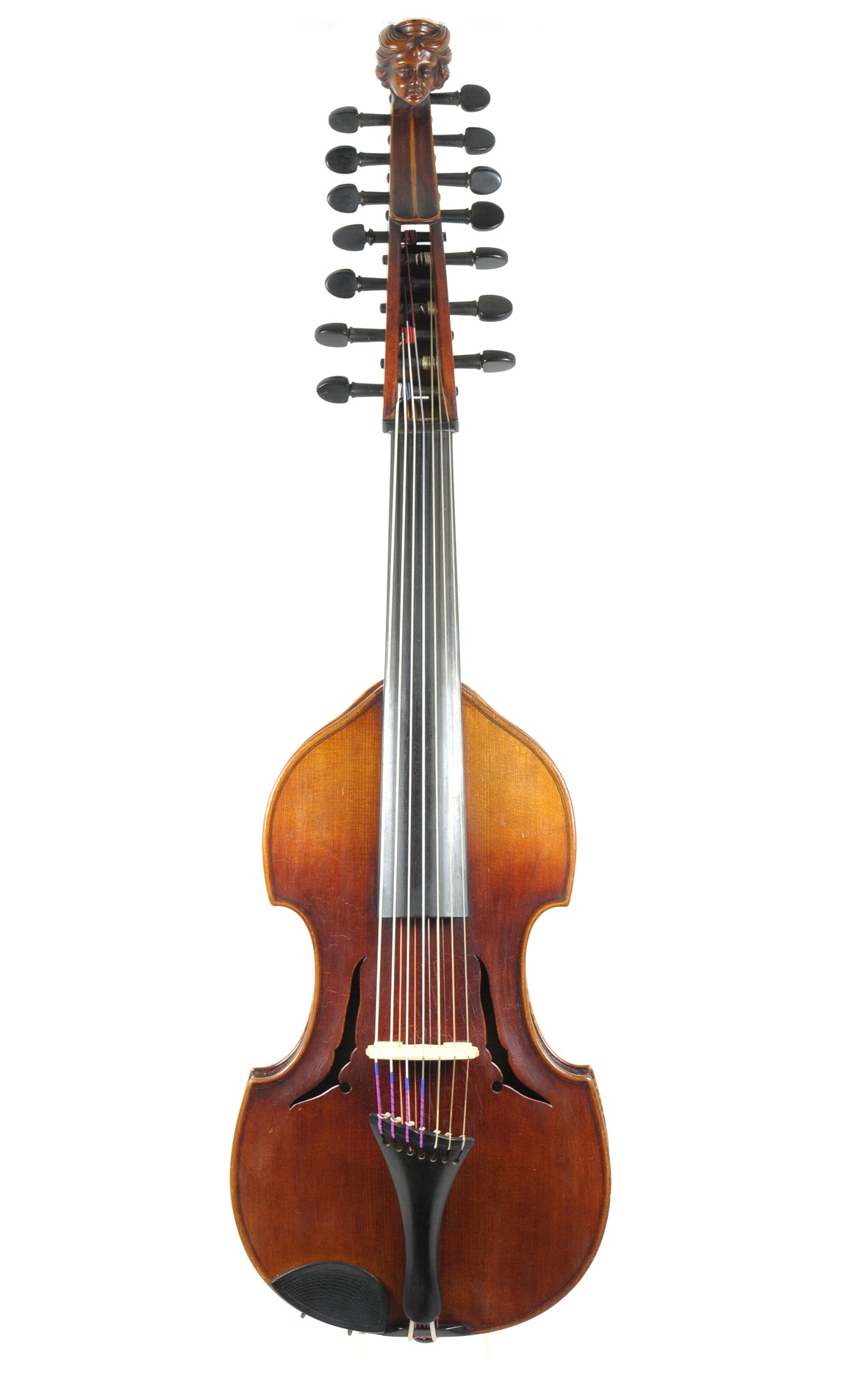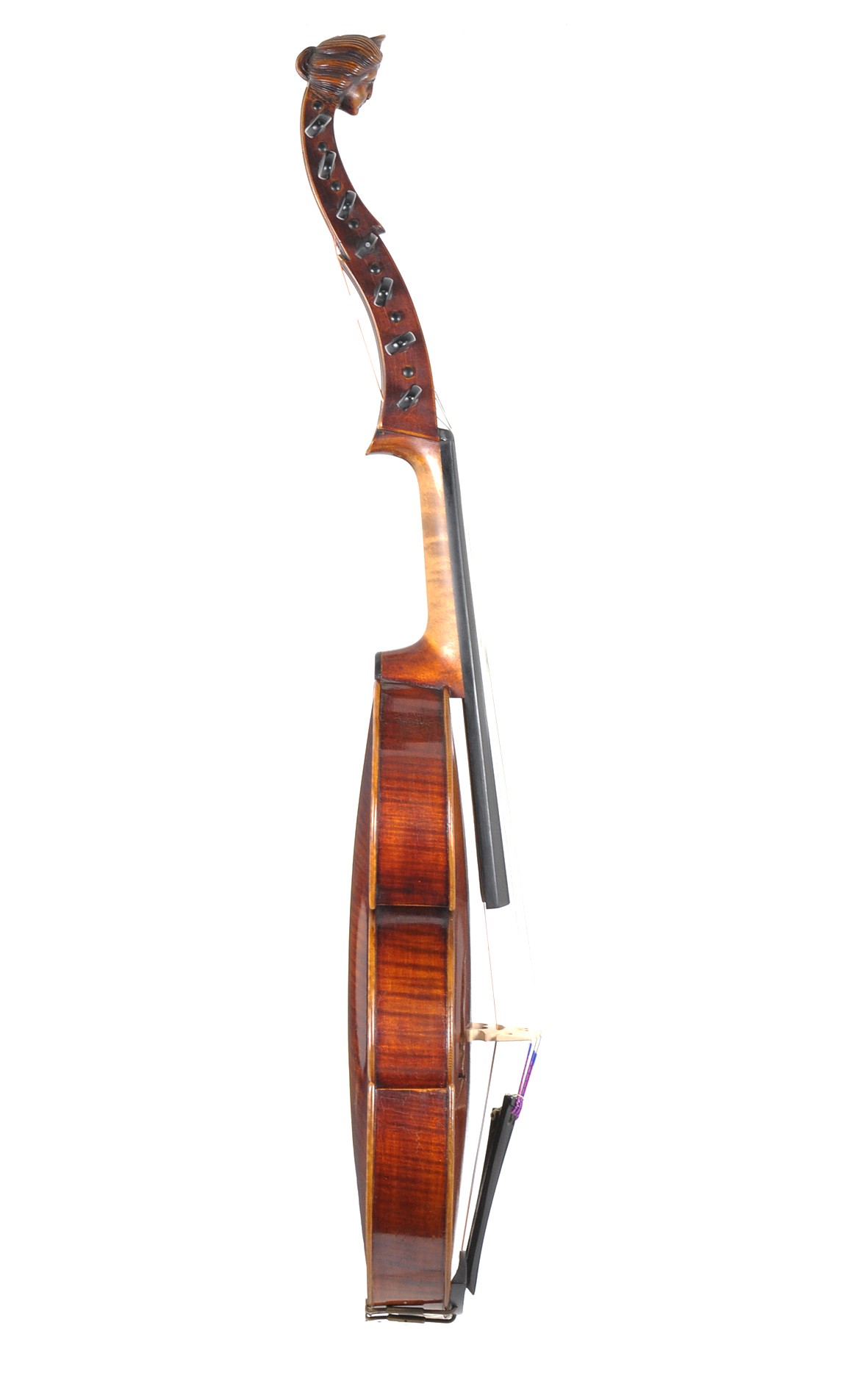Sold
Viola d'amore, masterpiece from around 1900
This viola d'amore is a well-preserved masterpiece by an unknown artist and was made around 1900, probably in northern Germany. It is a characteristic instrument of its period, a time in which European musicians began to rediscover historical music and the construction of the instruments that were used to play it. Henri Casadesus, who founded the "Société des Instruments Anciens" together with...
This viola d'amore is a well-preserved masterpiece by an unknown artist and was made around 1900, probably in northern Germany. It is a characteristic instrument of its period, a time in which European musicians began to rediscover historical music and the construction of the instruments that were used to play it. Henri Casadesus, who founded the "Société des Instruments Anciens" together with Camille Saint-Saëns, was an important figure in this movement and, among other things, helped revive the viola d'amore, which had all but been forgotten by the 19th century. From the very outset of its renaissance revival, the sphere of its musical activity was by no means limited to the repertoire of Baroque music, in which the viola d'amore was featured in many solo and chamber works as well as the famous pieces "Betrachte, meine Seel" ("Bethink thee, O my soul") and "Erwäge, wie sein blutgefärbter Rücken" ("Ponder well how his back bloodstained") from Bach's St. John's Passion. Beyond that, the instrument's sweet and silvery sound was immediately incorporated into modern compositions, both by Casadesus himself as well as by Paul Hindemith and other contemporary composers. An articulate manifestation of how much musicians appreciated its voice, this particular viola d'amore is full of great self-confidence and outstanding quality craftsmanship — a seemingly obsolete article from the annals of violinmaking that was revitalized with style. Outstandingly chosen tone woods and a gently aged reddish-brown oil varnish cast the best possible light on the distinctive contours of the body and its many interesting details; one example is the eye-catching but purely natural decorative nature of the wood used for the back. Its edges are naturally brighter, making the dramatic, deep flaming of the maple evident. The sound holes are very precisely carved, and in lieu of a scroll, there is an expressively carved head of a woman gracing the top of the peg box. Light crackling complements the character of this viola d'amore, which has seven strings and four sympathetic strings. With only a few minor repairs to the lower part of the top, it has been kept in excellent condition, and the specialist luthiers at our workshop have made it ready to play.
- Inventory no.
- 2531
- Provenance
- Unknown
- Length of back
- 40.0 cm



Fig. |
